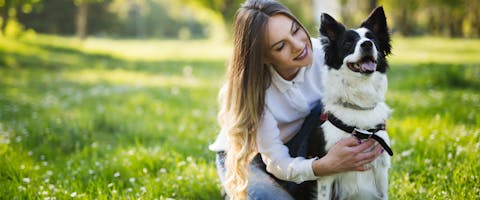Updated 4 Aug 2025
Recently adopted an older pooch, and need to learn how to house train an adult dog? No worries - you’re in the right place. Below, find our top tips on bathroom training dogs. From understanding the signs your dog needs the toilet, to picking the right potty spot and the importance of positive reinforcement, all the top tips on canine potty training are below.
Tips on how to house train an adult dog
Pick a potty spot
The first thing to consider when learning how to house train an adult dog is to pick a potty spot. This is the space you’d like your dog to learn to pee and poop. Consistently keep to a regular spot - be it your backyard, a place outside your apartment block, or a patch of grass near your home - so your dog becomes familiar with the area. After a while, seeing this spot will trigger your dog to use the bathroom without being told.
If your dog is showing signs of mobility issues, your vet may suggest an indoor bathroom for them. There are plenty of indoor pee and poop pads to choose from online (or that your vet will recommend) which are hygienic and odor-protected.
Establish a routine with potty breaks
The next thing to learn when understanding how to potty train an adult dog is that routine is everything. So when starting (or re-starting) your dog’s bathroom training journey, decide on a potty break routine that you can stick to. Frequent potty breaks throughout the day will help your dog get used to holding it in, and knowing when it’s safe to eliminate. Plan your dog’s potty breaks around their meal times, and remember that the older your dog is, the more frequently they might need to use the bathroom.
Look out for signs they need to go
When learning how to train an older dog to be housebroken, you’ll need to get to grips with the signs they need to pee or poop, to catch your dog before they have an accident. Being able to read your dog’s body language is key to fixing a routine for potty breaks and avoiding early accidents. Some common signs your dog needs the bathroom are:
- Pacing in circles
- Barking, scratching, or whining at the door
- Sniffing the floor
When in doubt, let them out!
Consider crate training your dog
Crate training is an important part of discipline and routine training for a dog - it also helps them learn to hold their bladders for a few hours at a time, rather than just going to the bathroom whenever.
By creating a safe and cozy space for your dog - like a crate - you’re teaching them that different areas of the home have different functions. Having a comfy, safe crate they can retreat to can help your dog further understand that it’s not the place to poop.
Positive reinforcement
Most dogs respond best to reward-based training, so along with plenty of comfort and patience, make sure you have their favorite toy or treat to hand to reward them when they pee or poop in the right place. You can also reward your dog for not using the toilet - if they’ve gone a few hours without an accident, reward them, let them out, and reward them again once they’ve done their business. It’s better for the dog and it helps build that all-important bond and relationship between you and your canine companion.
And naturally, remember that punishing your dog is never recommended - if you find urine or feces somewhere unwanted, simply clean it up, and continue rewarding your dog for the behaviors you want to continue.
Create a feeding schedule
Feed your dog at the same time every day - this will help your dog’s toileting schedule to become regular, and will help you to predict when they might need to go. Supervise your dog while they’re eating if you’ve only just adopted them, just to make sure they’re eating properly. If you have any concerns about your dog’s appetite or their diet, speak to your vet.
Corden off areas of your home
If you want to ensure that your dog eliminates outdoors, it can be worth cordoning off areas of your home with a baby gate while you’re training your dog. Eventually, your dog will learn to associate the potty spot with going to the bathroom, and the rest of your home with relaxing and playtime.
Trending posts
Purr-use some of the top blogs our members have been loving this month- Top male dog names for your new furry friendGot a new furry family member in your pack? Check…
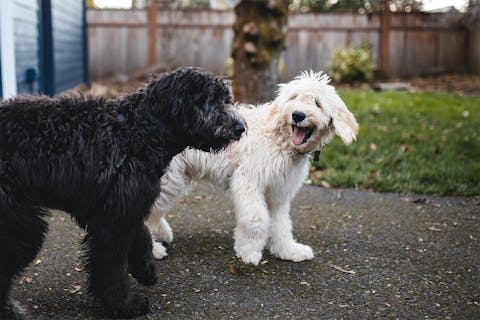
- Top female dog names for your new fluffy palWelcoming a new pooch into your family? Explore…
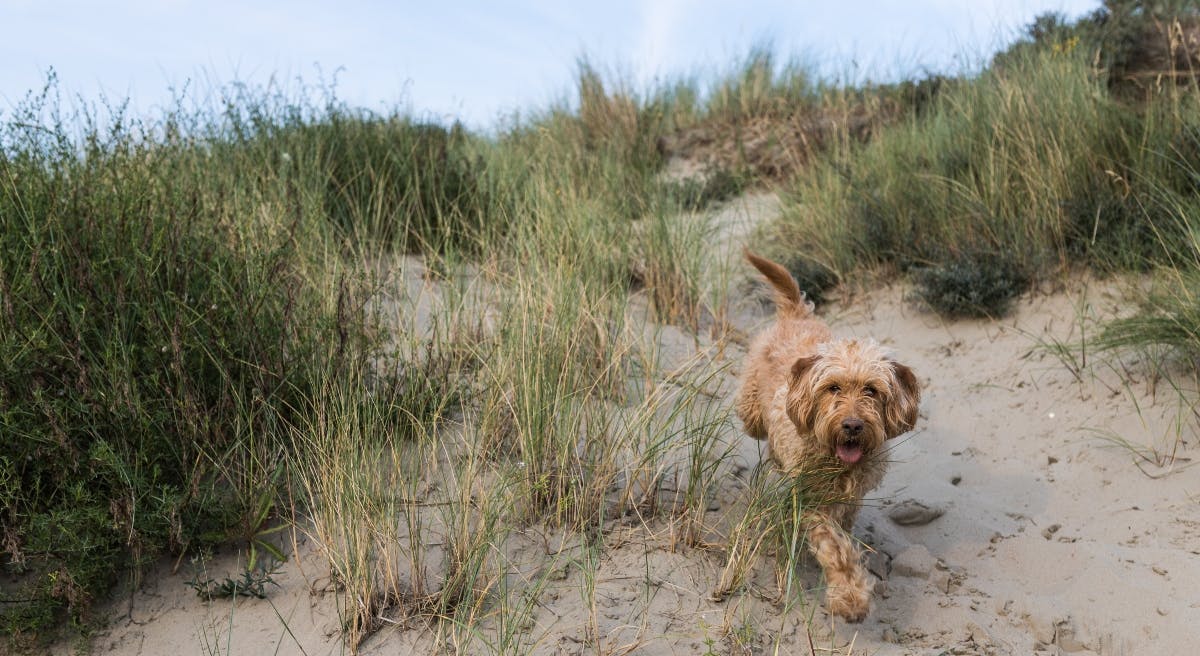
- 250+ gray cat names your silver feline will loveRecently welcomed a fluffy gray bundle of joy into…

- What are normal pet sitting rates?Discover the average pet sitting rates for animals…
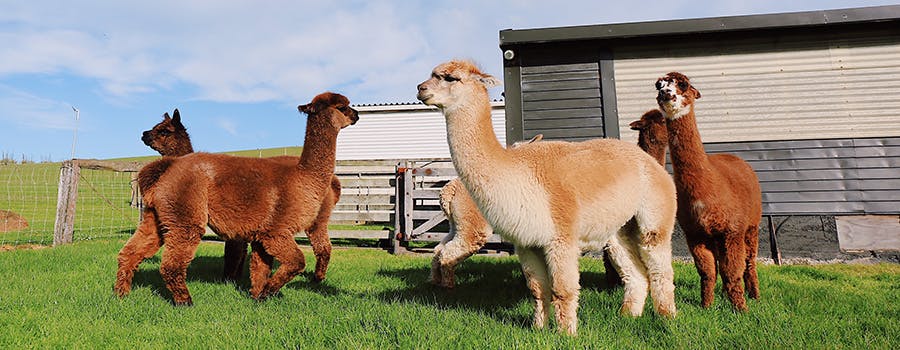
- Unique dog names to stand out from the packDare to be different with our list of the best…
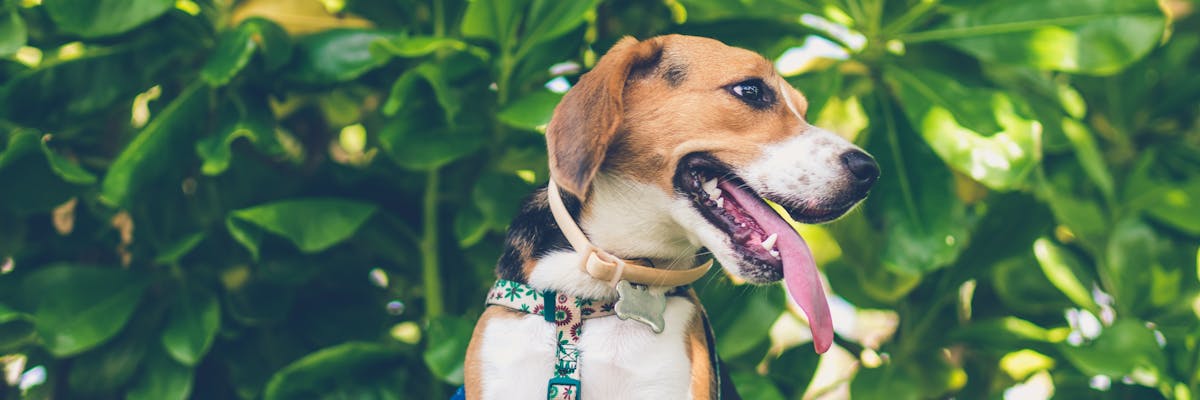
How to discourage a dog from peeing in the house
The key to discouraging your dog from peeing or pooping in the house is to stick to a consistent training routine with regular potty breaks, and positively reinforcing the right behaviors. When your dog pees outside, praise them and give them the chance to play with their favorite toy. Ensure your dog is fed at the same time every day so that you can predict when is best to let them out to poop, and learn the signs your dog needs to pee to avoid any accidents inside your home.
How long does potty training a dog take?
Potty training a dog can take between a few months and a year - it really depends on the consistency of the training, your dog’s past experiences and their ability to learn. However long it seems to be taking, stick to your dog’s feeding and potty routine, never punish them and always reward them for going to the bathroom on the right potty spot. If you’re concerned about your dog’s potty training, speak to a dog behaviorist or your vet.
Why might an older dog need potty training?
Sometimes, an adult dog or senior pup might need to be re-trained to use the bathroom. This is no fault of their pet parents, but part of the aging process (like humans). This can include:
- Lack of mobility or joint issues
- They need an indoor toilet
- Lack of cognitive abilities (sight, hearing, etc.)
- Age-related health issues
This just means their routine needs to be changed and some new rules enforced with gentle training. However, adopted or fostered senior dogs may have previously been somewhere they were never potty trained in the first place. For example, because of:
- Lack of training or discipline
- They’ve never lived outside
- They’ve only been trained to go on concrete or paper
- Health problems not age-related
While adult dogs still respond well to new training and tricks, rescued pups might need a bit more guidance and patience when house training.
Potty training a rescue dog
Every dog, regardless of their age or history, deserves to be trained with patience and kindness. This is especially important when it comes to training rescue dogs. An older dog with an unknown history is a potential risk to their new pet parents. Of course, it’s entirely up to you as their parent as to how you would like to train them, but often starting out with some professional guidance is advised. As always, consult your vet before making any big doggo decisions.
Are you a new pet parent to an older dog who needs house training? Or perhaps you have some potty training pearls of wisdom to share with other canine carers? Head to our Community Forum to share the love and knowledge of pet care with other pet lovers. Otherwise, browse our list of trusted dog sitters near you to find the paw-fect sitter to care for your precious pooch.

